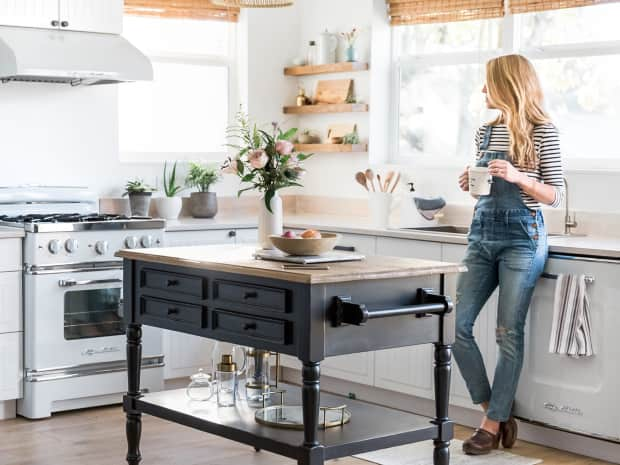
How to Clean a Dishwasher
Your dishwasher deserves a deep clean to keep it working its best. Our guide breaks down how to do the job, naturally.
Read More

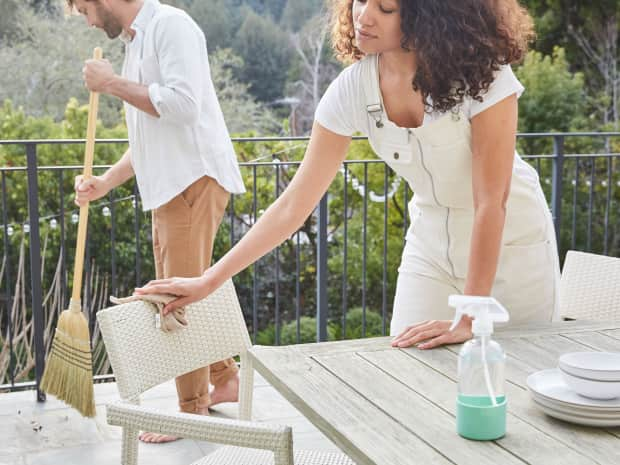
Last Updated: July 28, 2022
Are we still disinfecting every surface we encounter in our daily lives? Probably not so much, but here's how to clean and disinfect your home to prevent and reduce the spread of germs and bacteria.
Cleaning and disinfecting high-touch surfaces daily in household common areas is the current CDC recommendation if someone in your household is sick, but routine cleaning and disinfection of the home can help limit your risk regardless — especially if you have household members who are coming and going, such as returning from errands or attending school. Below are the basics of how to clean and disinfect your home to help prevent the spread of germs that can make you sick.
Cleaners, sanitizers, and disinfectants aren’t the same things (read more about the difference here), so if you’re going to properly do away with germs around the house, you’ve got to know the difference.
Remove dust, dirt, dander, crumbs, clutter, spills, stains, grease, grime, and gunk from surfaces to make your home look spic ‘n’ span.
Kill bacteria that can cause illnesses like food poisoning, respiratory tract infections, bacterial meningitis, and skin infections like impetigo or folliculitis.
Kill bacteria — plus viruses that cause illnesses like cold, flu, covid, warts, RSV, stomach “flu” and other unpleasant or dangerous infections.
The Centers for Disease Control (CDC) stresses that the only effective disinfecting products are those registered with the EPA (Environmental Protection Agency). Clem Choy, Ph.D., Grove’s Senior Director of Science and Formulation, acknowledges that there aren’t many choices when it comes to household germ-killing products.
“The category of disinfectants is pretty restrictive, and it’s always been dominated by Clorox and Lysol,” says Choy. “These are quaternary ammonium compounds — very effective for killing viruses and bacteria.”
Quarternary ammonium compounds, also known as Quats, can cause skin and eye irritation and trigger respiratory ailments. While quats are biodegradable and don’t accumulate in the environment or its creatures, they can be toxic to marine animals.
The good news is that there’s also thymol, a plant-based disinfectant that’s EPA-registered and used in a variety of antimicrobial products, including Seventh Generation’s disinfectants.
“Thymol is an essential oil, but it possesses antimicrobial activity — it’s an active essential oil,” says Choy. “There are other essential oils that have antimicrobial activity, but thymol is probably one of the best.”
Thymol disrupts the cell walls and membranes of bacteria, which causes the cell’s contents to leak out, killing the bacteria. When it comes into contact with a virus, thymol breaks down the fatty protective coating, which deactivates the virus.
Learn more about how thymol works with our expert explainer.
Grove Tip
While vinegar may have anti-bacterial properties, it hasn’t been fully tested to learn what bacteria or viruses it can kill. “Vinegar alone is not a replacement for one of the products that's already been tested and approved by the EPA to kill bacteria and coronavirus,” says Choy.
No matter what you use to disinfect your surfaces, using it properly is the key to killing germs and bacteria that can make you sick. Plain soap and water won’t necessarily kill bacteria, germs, or viruses unless paired with a disinfection step. You need to first clean the surfaces, which means removing debris or dust by wiping the objects with a cloth dampened with soapy water or cleaning spray. Then, you can use a surface-appropriate disinfectant like a disinfecting spray or wipe.
Some disinfectants are less effective if you use them on dirty surfaces or just wipe them on a surface and then immediately wipe off; be sure to follow the product’s directions so it has time to work. Now that you’re armed with the supplies and the technique — clean, then disinfect — time to hit the high-touch surfaces in each room with this dynamic duo.
Looking for the nitty gritty on how to tackle some of the items in your home likely harboring the most germs? Click through for our in-depth guides to banishing cold-causing microbers and viruses on 5 tricky surfaces.
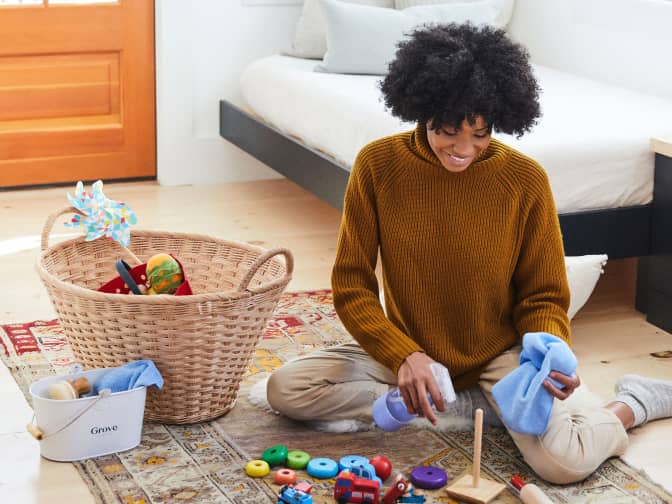
Wipe down with cleaner and also disinfect:
Grove Tip
Even if you think you've got a strong handle on the items you need to tackle to keep your home virus-free, there might be a hidden source sneaking germs into your home. Check out our Overlooked Items to Clean Checklist for the most common culprits.
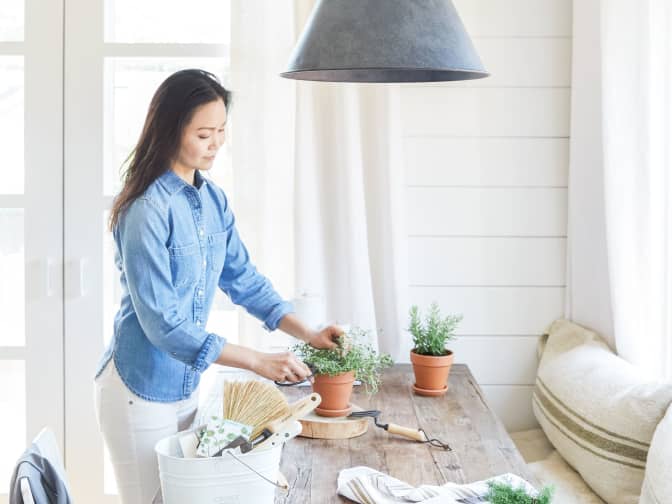
Wipe down with cleaner and also disinfect:
Grove tip
Remember to clean any items you display or leave on the table, including candlesticks and salt and pepper shakers.
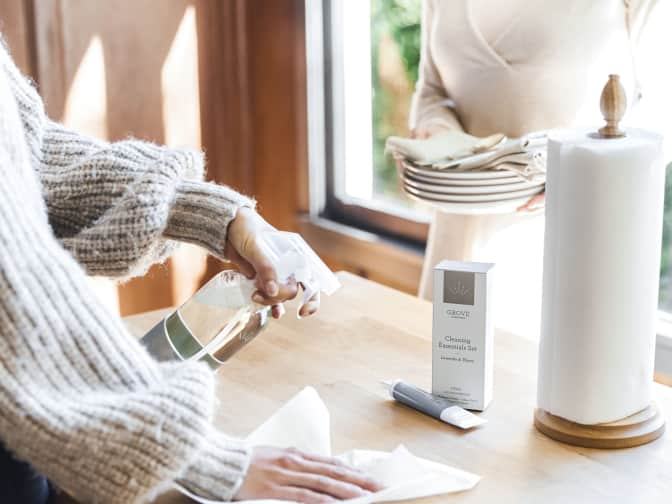
Wipe down with cleaner and also disinfect:
For more, check out our Ultimate Kitchen Cleaning Guide.
Grove Tip
Also clean and disinfect the high-touch items specific to your household, such as a plastic water pitcher or coffee machine.
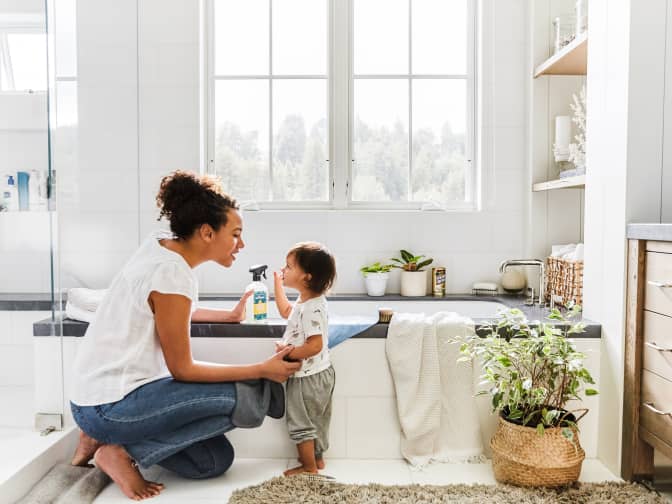
Wipe down with cleaner and also disinfect:
For more, check out our Ultimate Bathroom Cleaning Guide.
Grove Tip
Remember to switch out any reusable cups and used hand towels, and to periodically clean overlooked items like the toilet paper holder.

Wipe down with cleaner and also disinfect:
Grove Tip
If using and/or sharing a laptop, the top portion you lift and close likely sees a lot of fingers, as might any monitors that require adjusting. When it comes to computer screens, don’t use disinfecting wipes in case the display isn't made of glass. Instead, try a solution of 70% isopropyl alcohol and a soft towel.
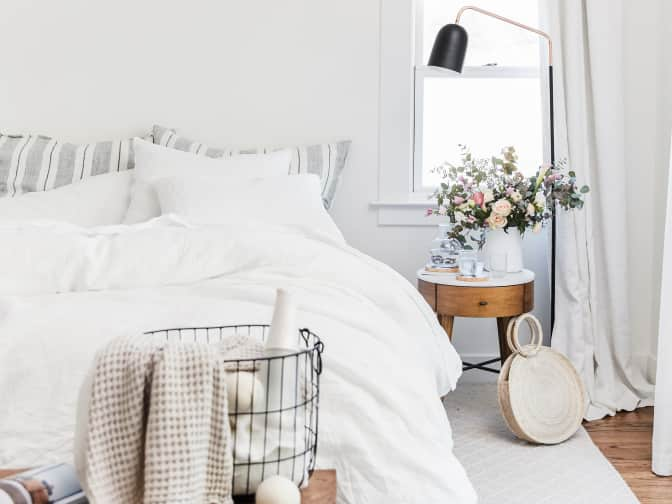
Wipe down with cleaner and also disinfect:
For more, check out our Ultimate Bedroom Cleaning Guide.
Grove Tip
Germs and bacteria don’t survive as long on fabric as they do on metal or other hard surfaces; a simple standard washing should be enough. Change and launder your sheets and pillowcases – and pajamas - regularly.
Cleaning physically removes gunk that could be harboring germs. Disinfecting kills germs but doesn’t remove any gunk. The CDC says we need to do both.
The CDC says that your regular household cleaners and EPA-registered disinfectants are sufficient and should be used as directed. There are no special instructions for COVID-19.
Although the USPS assures us that mail and packages are relatively low-risk in terms of COVID-19 transmission — and CDC and WHO have indicated there’s no evidence the virus is spread via the mail, research has shown it can live on cardboard for up to 24 hours. If you want to be especially careful, wash your hands after collecting the mail and put it aside for several days, or give it a quick wipe with disinfectant.
Looking for more cleaning how-tos and other sustainable swaps you can make at home? Grove has you covered. From timely topics such as our handwashing and hand sanitizer breakdown to evergreen primers like our simple ways to reduce your plastic use at home, our handy guides are here to answer your most pressing questions. And let us know how if you have any cleaning questions (or share your own tips using #grovehome) by following Grove Collaborative on Instagram, Facebook, Twitter, and Pinterest.
If you're ready to take on germs, shop Grove Collaborative's cleaning essentials for the cleaning tools to tackle the job.

Your dishwasher deserves a deep clean to keep it working its best. Our guide breaks down how to do the job, naturally.

Our handy guide to everything you need to know to keep you and your family healthy and germ-free.
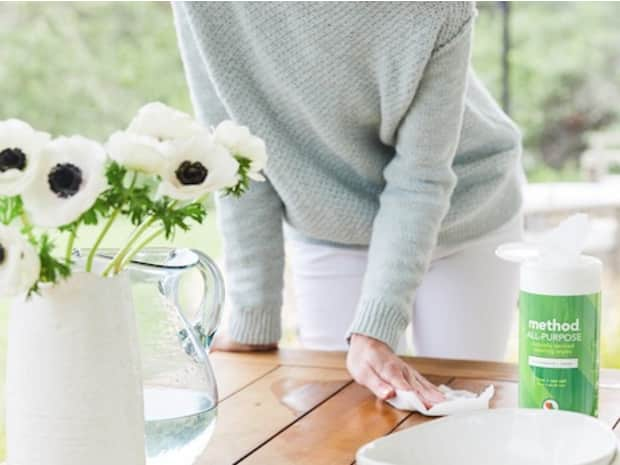
Follow our comprehensive checklist of totally tackle-able tasks to make your place shine.
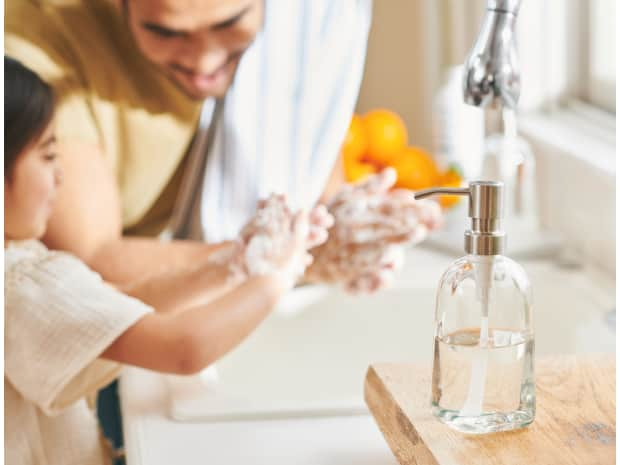
How to go plastic-free if you're just getting started — and how to level up if you're ready to make a commitment.